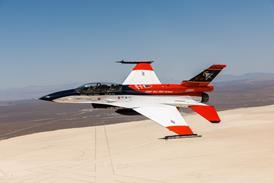Contract award for the next spy aircraft in the US Army fleet was delayed as the four competing teams prepared to submit final proposal revisions on 27 October.
The army had planned to award the enhanced medium altitude reconnaissance and surveillance system (EMARSS) contract on 25 October, but asked for a new round of proposals three days earlier, say industry observers.
A contract award is now expected by the end of the year, with the army to select between Boeing, L-3 Communications, Lockheed Martin and Northrop Grumman.
EMARSS was launched in the aftermath of the cancellation in 2006 of the Aerial Common Sensor aircraft, an Embraer ERJ-145 regional jet adapted by Lockheed into a signals intelligence collector.
The army decided to shift to a smaller turboprop with the EMARSS competition. Each bidder is required to select the Beechcraft King Air 350ER turboprop, and integrate a communications intelligence payload, electro-optical/infrared sensor and two workstations operating the Raytheon distributed common ground system (DCGS).
Boeing has acquired signals intelligence specialist Argon ST partly in preparation for the EMARSS contract. L-3 is advertising its role in adapting the King Air 350ER for the US Air Force's MC-12 Liberty programme. Northrop, meanwhile, is the incumbent supplier for the army's RC-12 Guardrail fleet.
Lockheed, the original ACS vendor, has teamed with Sierra Nevada for EMARRS. The latter provided a version of the aircraft without the DCGS workstation for the US Army's task force ODIN campaigns in Afghanistan and Iraq.
Source: Flight International
















